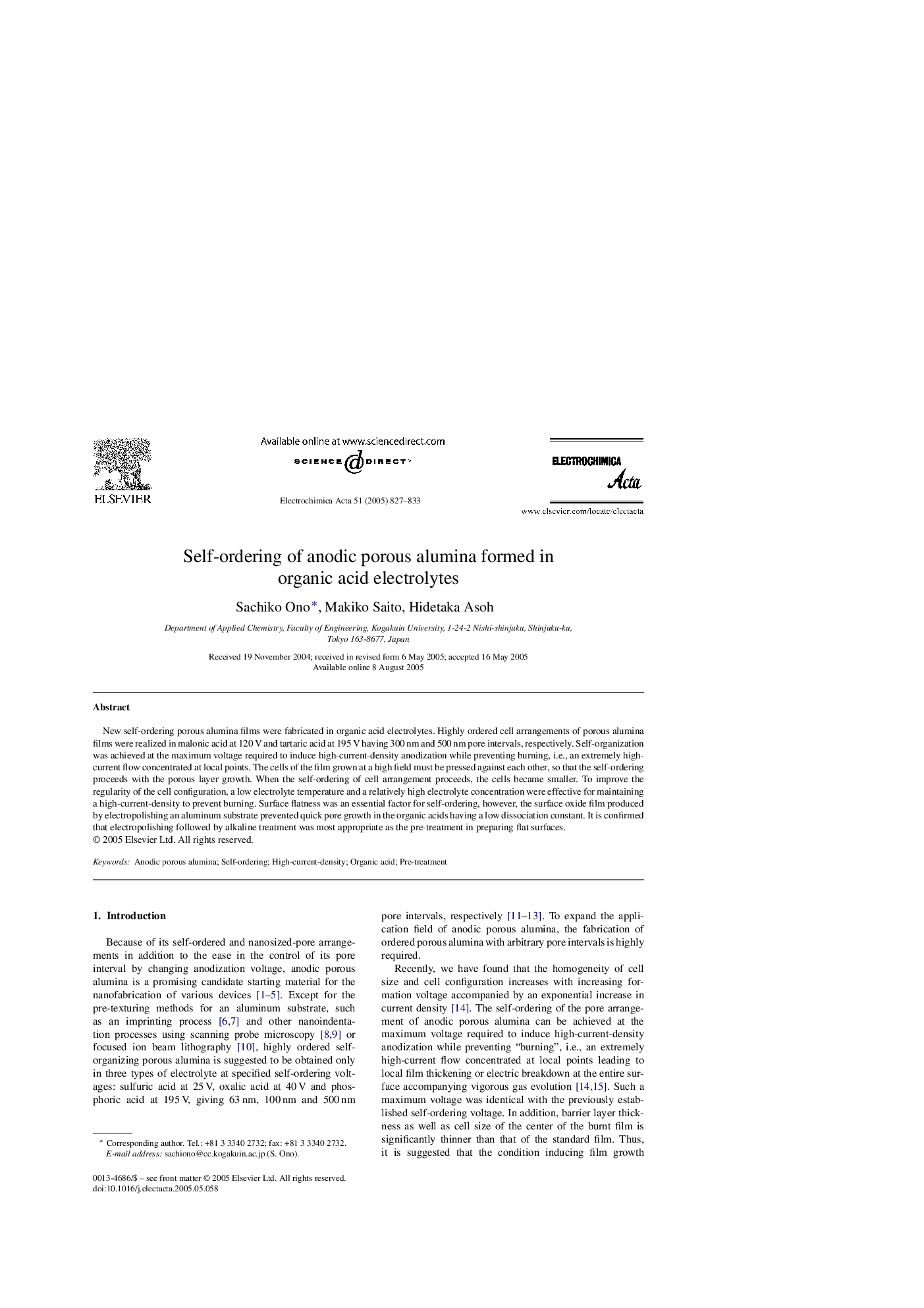| Article ID | Journal | Published Year | Pages | File Type |
|---|---|---|---|---|
| 10269391 | Electrochimica Acta | 2005 | 7 Pages |
Abstract
New self-ordering porous alumina films were fabricated in organic acid electrolytes. Highly ordered cell arrangements of porous alumina films were realized in malonic acid at 120Â V and tartaric acid at 195Â V having 300Â nm and 500Â nm pore intervals, respectively. Self-organization was achieved at the maximum voltage required to induce high-current-density anodization while preventing burning, i.e., an extremely high-current flow concentrated at local points. The cells of the film grown at a high field must be pressed against each other, so that the self-ordering proceeds with the porous layer growth. When the self-ordering of cell arrangement proceeds, the cells became smaller. To improve the regularity of the cell configuration, a low electrolyte temperature and a relatively high electrolyte concentration were effective for maintaining a high-current-density to prevent burning. Surface flatness was an essential factor for self-ordering, however, the surface oxide film produced by electropolishing an aluminum substrate prevented quick pore growth in the organic acids having a low dissociation constant. It is confirmed that electropolishing followed by alkaline treatment was most appropriate as the pre-treatment in preparing flat surfaces.
Related Topics
Physical Sciences and Engineering
Chemical Engineering
Chemical Engineering (General)
Authors
Sachiko Ono, Makiko Saito, Hidetaka Asoh,
